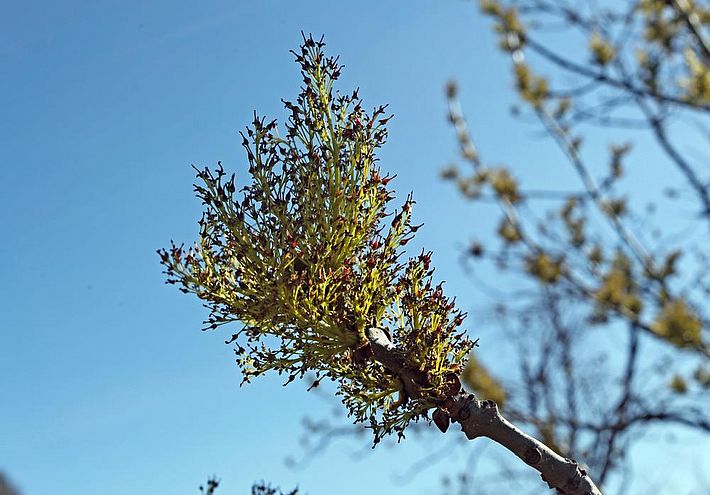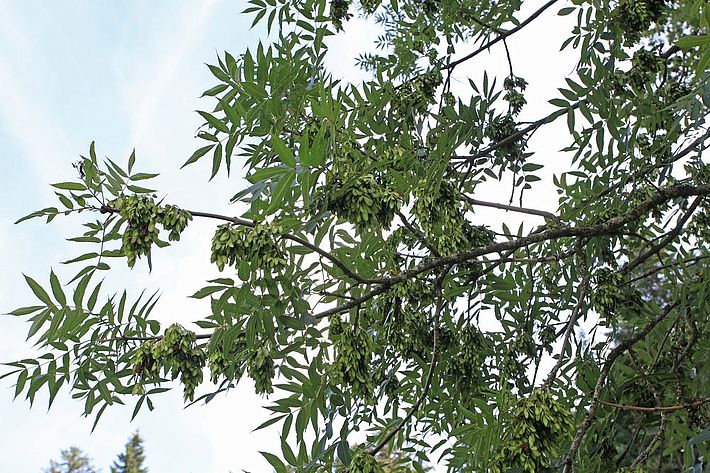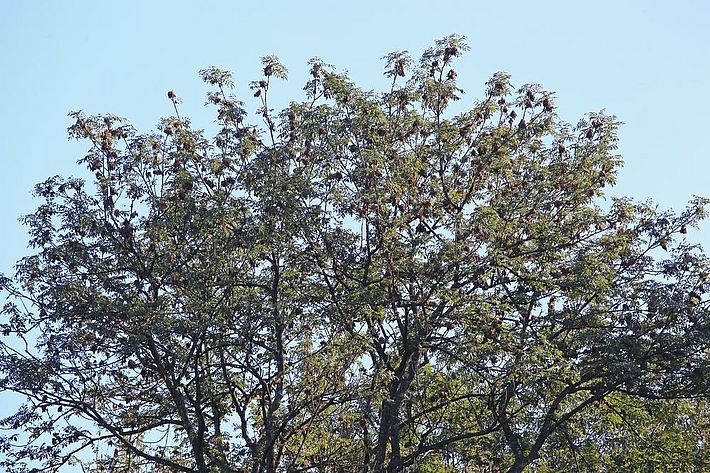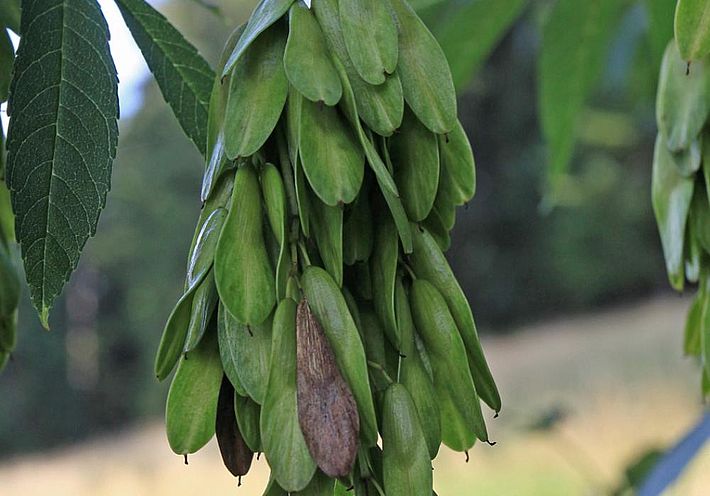Fraxinus excelsior L. | F: Frêne commun | I: Frassino comune | R: Fraissen | D: Esche ¶
Gernal information about the European ash ¶
Ash is widespread and forms forests in the northern Alpine foothills with sycamore maple or alder (formerly elm) on waterlogged or temporarily wet soils, for example in floodplains and on damp slopes. It prefers nutrient-rich, moist sites of the colline and submontane stages, but also thrives on dry Jura slopes1. The future of the ash is uncertain, as ash shoot dieback has been spreading in Europe since the 1990s. The fungus Hymenoscyphus pseudoalbidus infects leaves and shoots and causes them to die2. No treatment options are known to date, but some individuals seem resistant to the fungal disease2.
Blooming ¶
The ash tree flowers in May, before the leaves emerge. The flowers are arranged in lateral panicles and are the only ones in the olive family to be pollinated by the wind (Fig. 1). Ash flowers are considered hermaphroditic, i.e. they contain both a stigma and stamens. However, as one of the sexes is often missing, in these cases, the trees are referred to as male or female.
Fruits ¶
The winged ash nuts (Fig. 2) ripen in October and November and are dispersed by the wind over the course of the winter, sometimes over great distances.
Seed masting behaviour ¶
Ash trees produce a large amount of seed every 2 to 3 years, but often a large proportion of this is unfertilised3. True mast years therefore only occur every 5 to 6 years3. This is probably because pollen and seed production takes place at different times of the year, and the weather can change during this period. In predominantly male individuals, which produce the largest amount of pollen, flower and thus pollen production is particularly large after favourable weather in the preceding autumn4. Seed production in female ash trees, on the other hand, is affected by frost and drought in the seed year itself4.
Assessment of seed mast ¶
Time: August to November. The earlier the masting is assessed in ash, the easier it is to recognise the green seeds. After seed maturity, it is often difficult to distinguish between withered flowers and formed seeds (Fig. 4).
Assessment of fruiting: Seed masting is a phenomenon that does not affect the individual tree, but encompasses entire stands in a larger geographical area. The intensity of an ash mast can be assessed according to the following key:
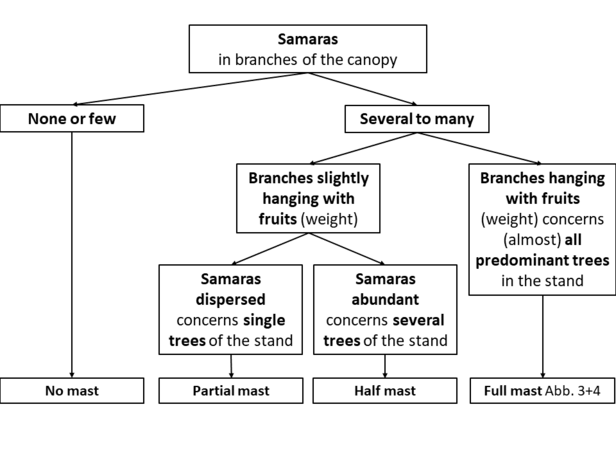
1 Brändli UB (1996) Die häufigsten Waldbäume der Schweiz. Ber. Eidg. Forsch.anst. Wald Schnee Landsch. 342
2 www.waldwissen.net
3 Tapper P G (1996) Long-term patterns of mast fruiting in Fraxinus excelsior. Ecology 77: 2567-2572
4 Bochenek G M, Eriksen B (2010) Annual growth of male and female individuals of the common ash (Fraxinus excelsior L.). Plant Ecology & Diversity 3: 47-57
Download ¶
-
Artenblatt Esche 3 MB
